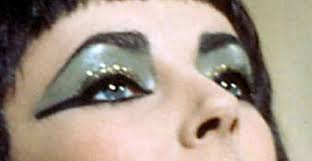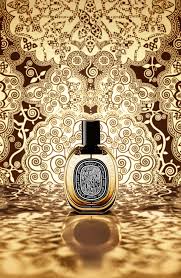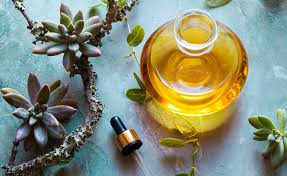LIQUID GOLD
Posted by Deirdre | Filed under Blog

The lure of the exotic, centuries of esthetic practice backed by religion and philosophy, the use of herbs and other natural ingredients on top of the unmistakable whiff of authenticity has re-established the Middle East and the wider Eastern Hemisphere as a major influence on some of the latest Western beauty trends.
Steeped in history and fantastical harem-inspired stories of the 1,001 Arabian Nights variety, the lands of the former Ottoman Empire, from the Mediterranean basin to Mughul India, are inspiring new beauty concepts that Western beauty brands are taking mainstream. Where Europe’s established style capitals of Paris and Milan have traditionally dictated global beauty and fashion trends, the new influencers are Eastern territories where feminine beauty is a time-honoured pursuit.
The complex beauty regimens of Korean and Japanese women served as the inspiration behind new skincare products released last year by Estee Lauder and Garnier among other cosmetics companies in the West. This time around the new kids on the block are more ancient. From Spit Girl Potion hieroglyphic perfume bottles to Stila Kajal eyeliner in onyx for creating Cleopatra-inspired kohl rimmed eyes, the new range of East-meets-West beauty products take inspiration from antique grooming rituals recast for the 21st century.

Take oud, the pungent ingredient used by Syrians and Egyptians during the time of the Pharaohs as temple-burning incense and an aromatic oil in medicine.
Rumoured to ward off the evil eye and attract lovers, the liquid gold of the ancients is the key ingredient in a spate of new fragrances put out by Western brands hoping the ancient elixir will continue to work its magic by drawing in consumers. Selling for up to $30,000 a kilo, depending on its purity, oud is dark, rich and heady and so oud-based fragrances created for the Western market typically blend in other ingredients to make it palatable to contemporary tastes.
In Dyptique’s Oud Palo, Bulgarian rose has been mixed in to conjure an English garden after the rain. In Tom Ford’s Private Blend Oud Collection, which includes fragrances as well as bath and body products, the addition of vetiver and amber produces an effect that is more wood trail after a fire.

The Indian subcontinent’s own storied culture inspired Sahajan, a new all-natural skin and hair care line based on 5,000-year-old Ayurvedic medicine and beauty rituals.
“It’s the first of its kind,” says Lisa Mattam, a Torontonian who has worked with two Ayurvedic practitioners in India to develop her line of five plant- and fruit-based products: four for the face and an oil for the body and hair.
The ancient system of healing defines health as a balanced relationship between body and mind. Inner harmony produces outward beauty. It’s an old idea gaining new adherents.

Sahajan’s launch at the 2015 Toronto International Film Festival attracted celebrities already hip to the Ayurvedic philosophy who walked away with armfuls of products, among them actresses Brie Larson and Sarah Gadon and English actor Tom Hardy who immediately used the Sahajan hair oil to soften his beard.
The Old World is suddenly new again. Mattam believes it’s a trend that is here to stay. “To me, it’s about taking advantage of ancient beauty and wellness practices and leveraging them for the modern beauty world,” she says. “I think we all can benefit from tapping into the wisdom, experience and insights of other cultures.”
